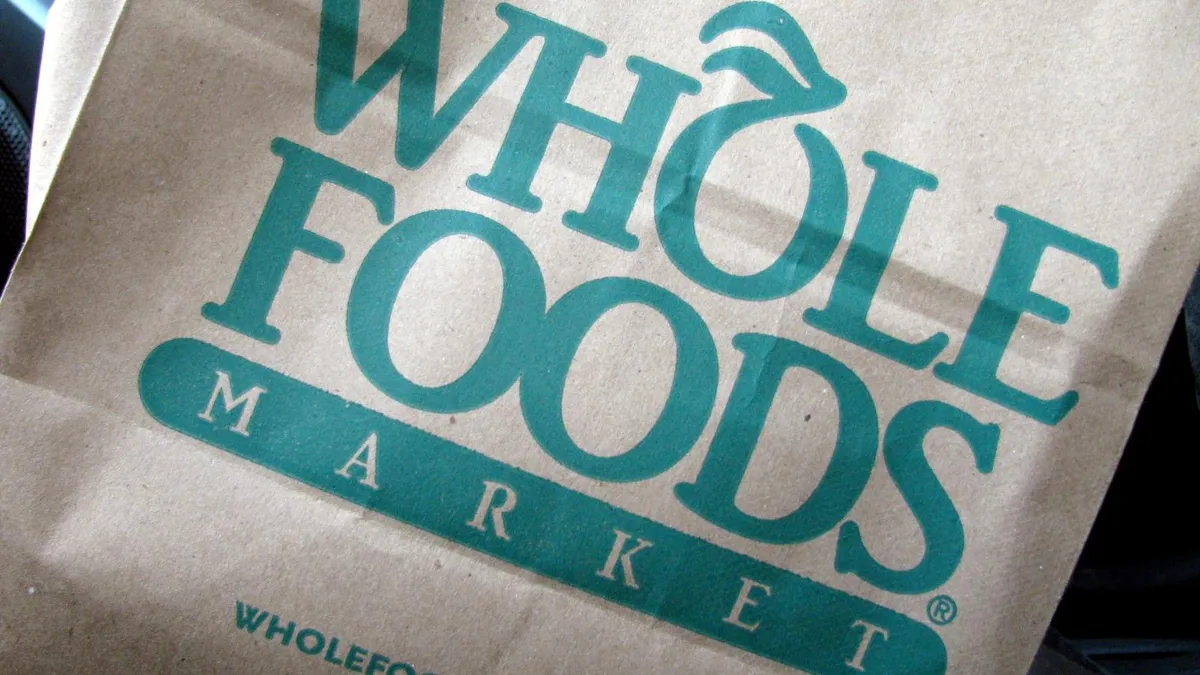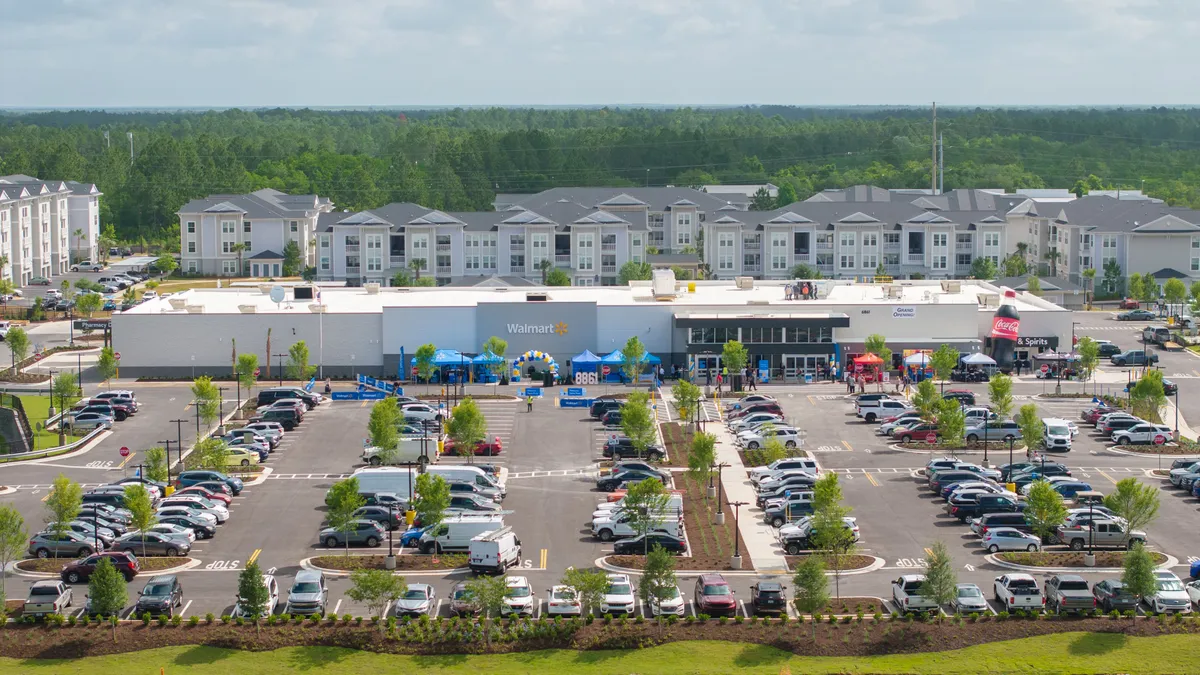Dive Brief:
- Whole Foods’ slide continued as it reported a same store sales decline of 2.8% during the second quarter ended April 9th, according to a company release. That’s the seventh straight quarter of same-store sales declines for the natural and organic retailer.
- The company announced plans to further accelerate its turnaround plan, which includes expanding its loyalty program to all stores, offering more targeted promotions, lowering prices and cutting an additional $300 million from its operations.
- Whole Foods targeted a return to positive comp-store sales and earnings growth by 2018, and by 2020 hopes to see comp-store sales of 2% or higher and total sales of more than $18 billion.
Dive Insight:
Whole Foods wants Jana Partners, Neuberger Berman and the rest of its shareholders to know it takes their calls for improved performance seriously. After announcing an acceleration of its growth plan in February, the company, under increasing pressure to quickly deliver results, is now putting that plan into overdrive.
"We understand that we need to do much more, and faster," said Whole Foods CEO John Mackey during yesterday’s earnings call.
This includes an expansion of its affinity loyalty program to all stores, honing its acquisition and use of customer data, lowering prices throughout stores, and centralizing its purchasing. It also includes another $300 million in cost reductions — the same figure the company floated back in 2015, and which led to layoffs and the closing of prepared foods commissaries, among other measures.
The company is also making big changes to its boardroom, announcing the replacement of five board members and the addition of a new chairman, Gabrielle Sulzberger, who has served as an independent director for more than a decade and is a principal at investment firm Rustic Canyon/Fontis Partners LP. Whole Foods also announced the appointment of a new chief financial officer, Keith Manbeck, formerly with Nike.
Much of the company’s growth plan comes from a traditional retailing playbook that Whole Foods long rejected. Analysts agree the company waited too long to respond to competitive pressures from conventional retailers, discount natural and organic stores and other formats. Even if it does succeed in returning to comp store sales and earnings growth, will Whole Foods still offer the high level of service, unique products and values-focused retailing that its core customers — or “Whole Foodies” — demand?
On the plus side for the Whole Foods, its new 365 stores seem to be performing to expectations. These locations offer lower-priced goods in a low-frills environment, and are geared towards millennial shoppers. The company currently has four in operation with 22 in development. Mackey said the company plans to increase its store rollout.
"We like the profit model that 365 delivers,” he said. “It doesn't have all the bells and whistles that Whole Foods has but also has significantly lower capital costs."
All in all, it was a day of dramatic changes that reflected the immense pressure the natural and organic retailer is under right now. The key question remains: Can the company deliver results quickly enough to avoid a sale?










